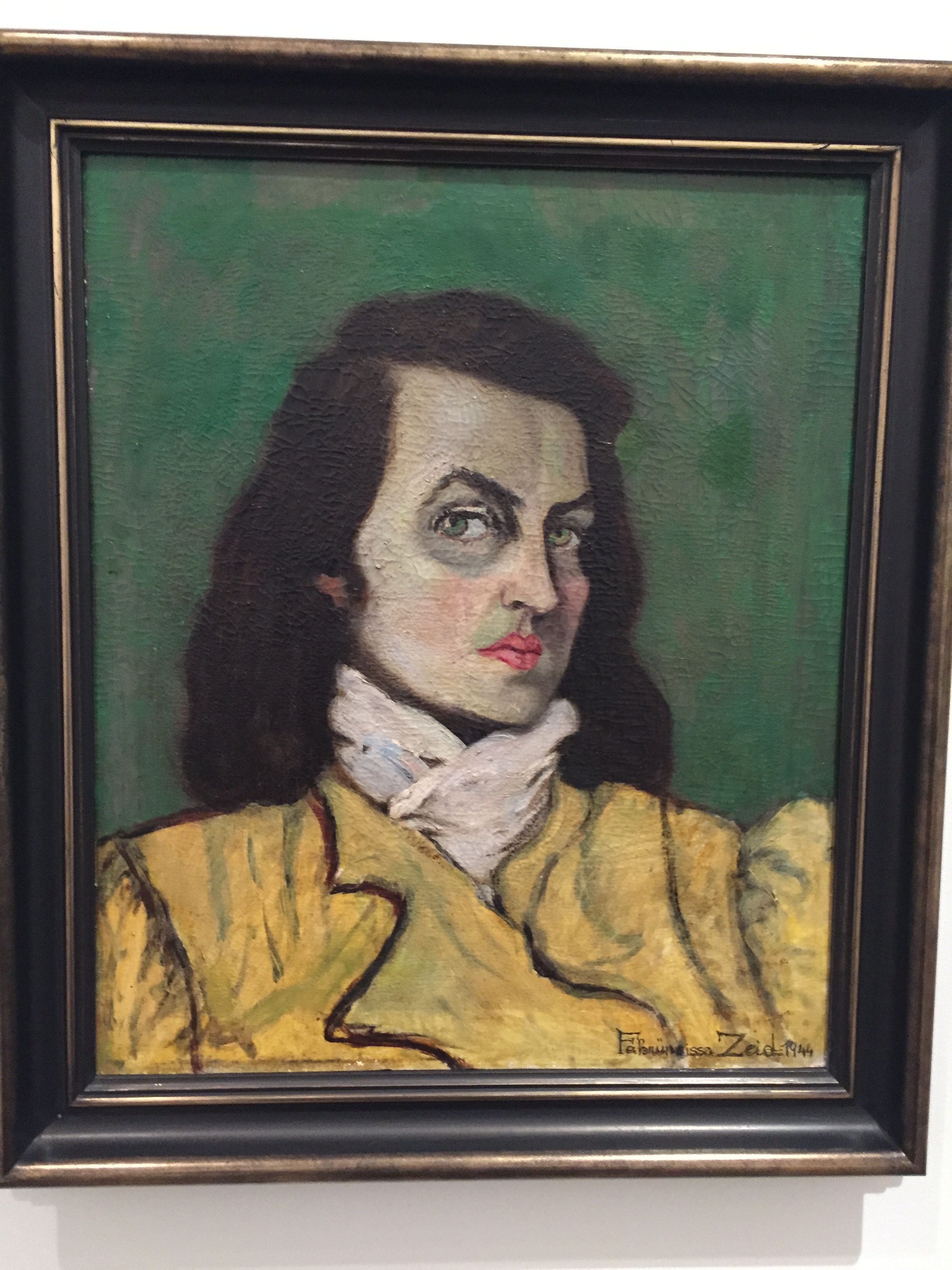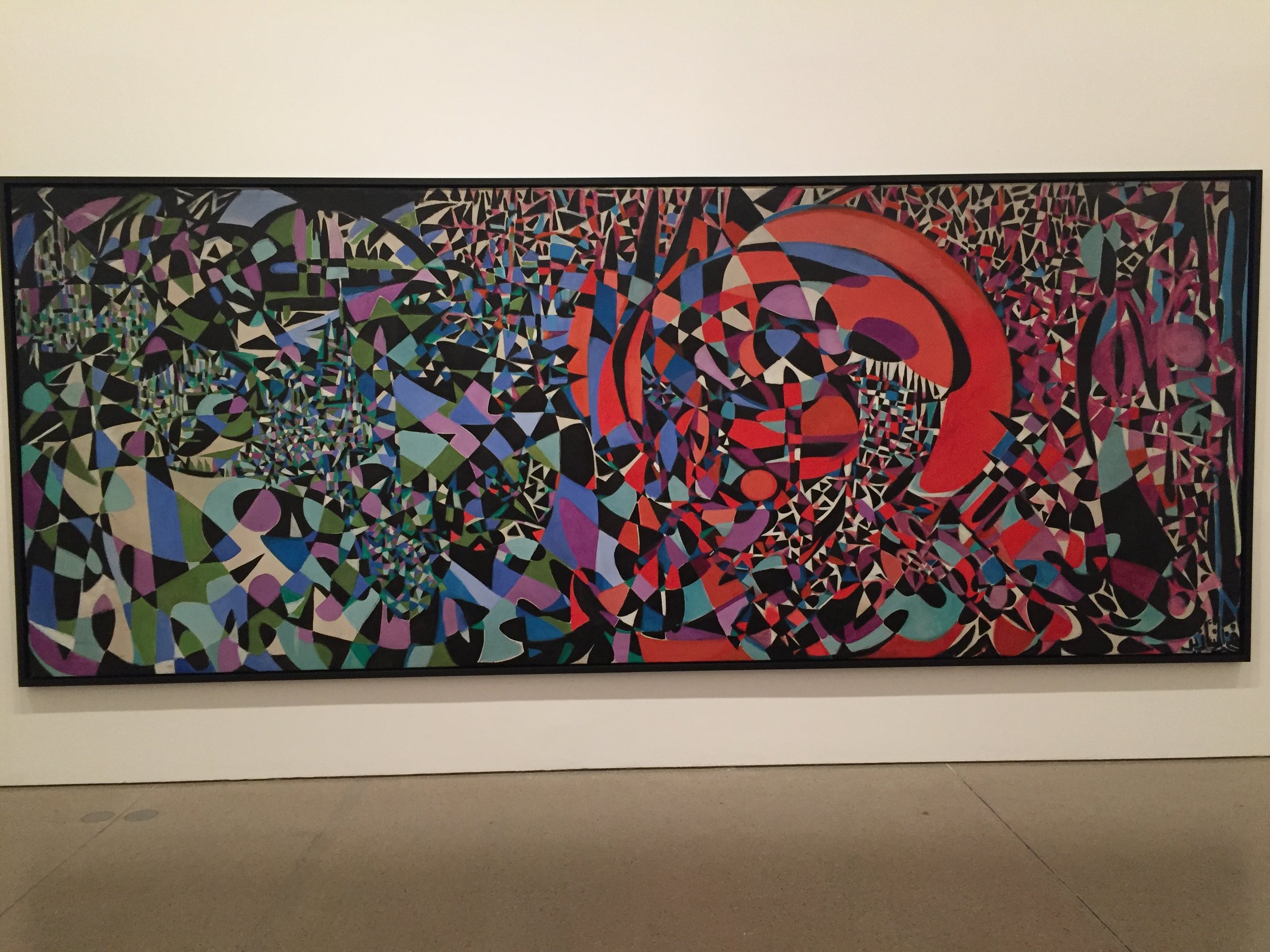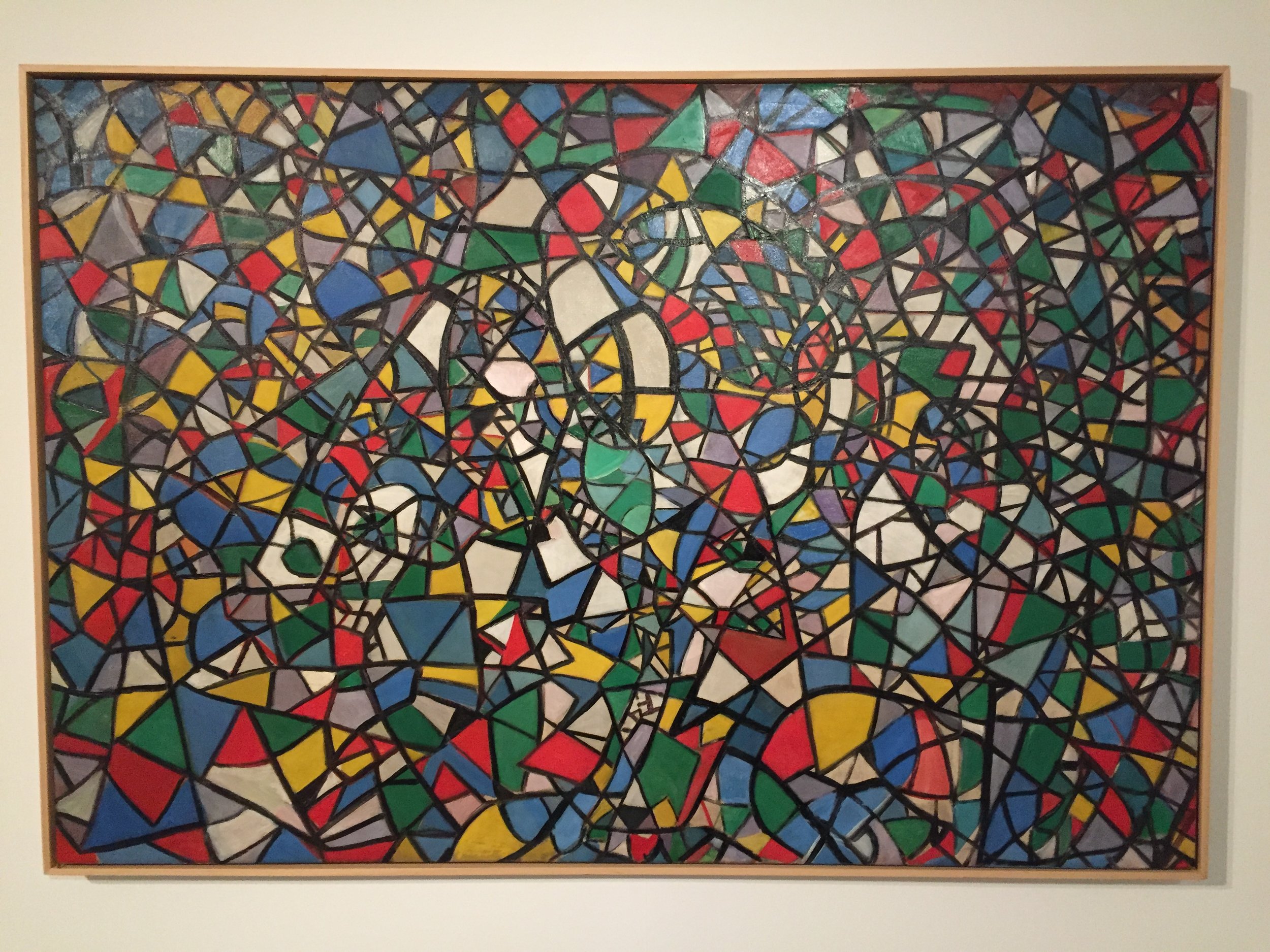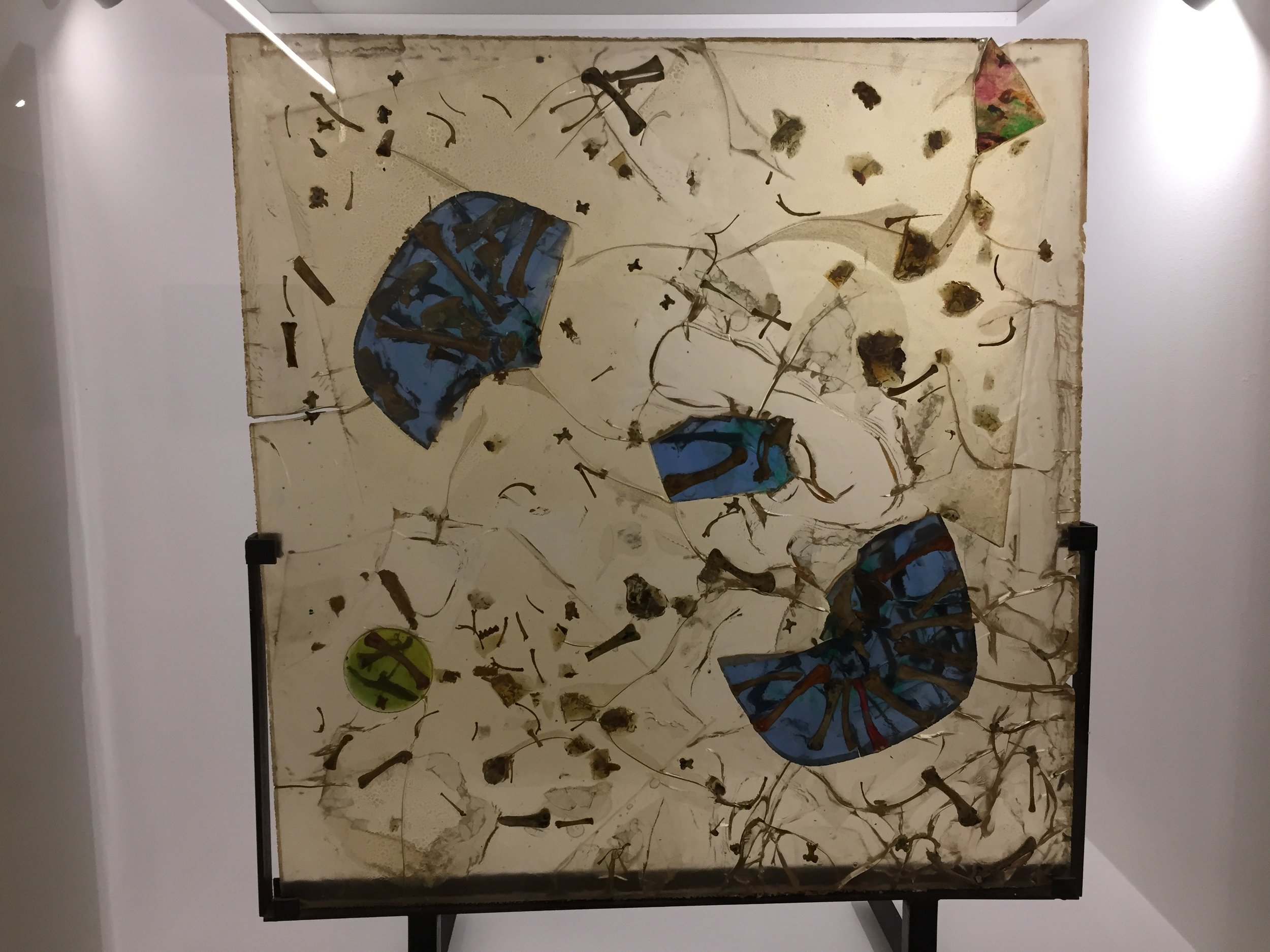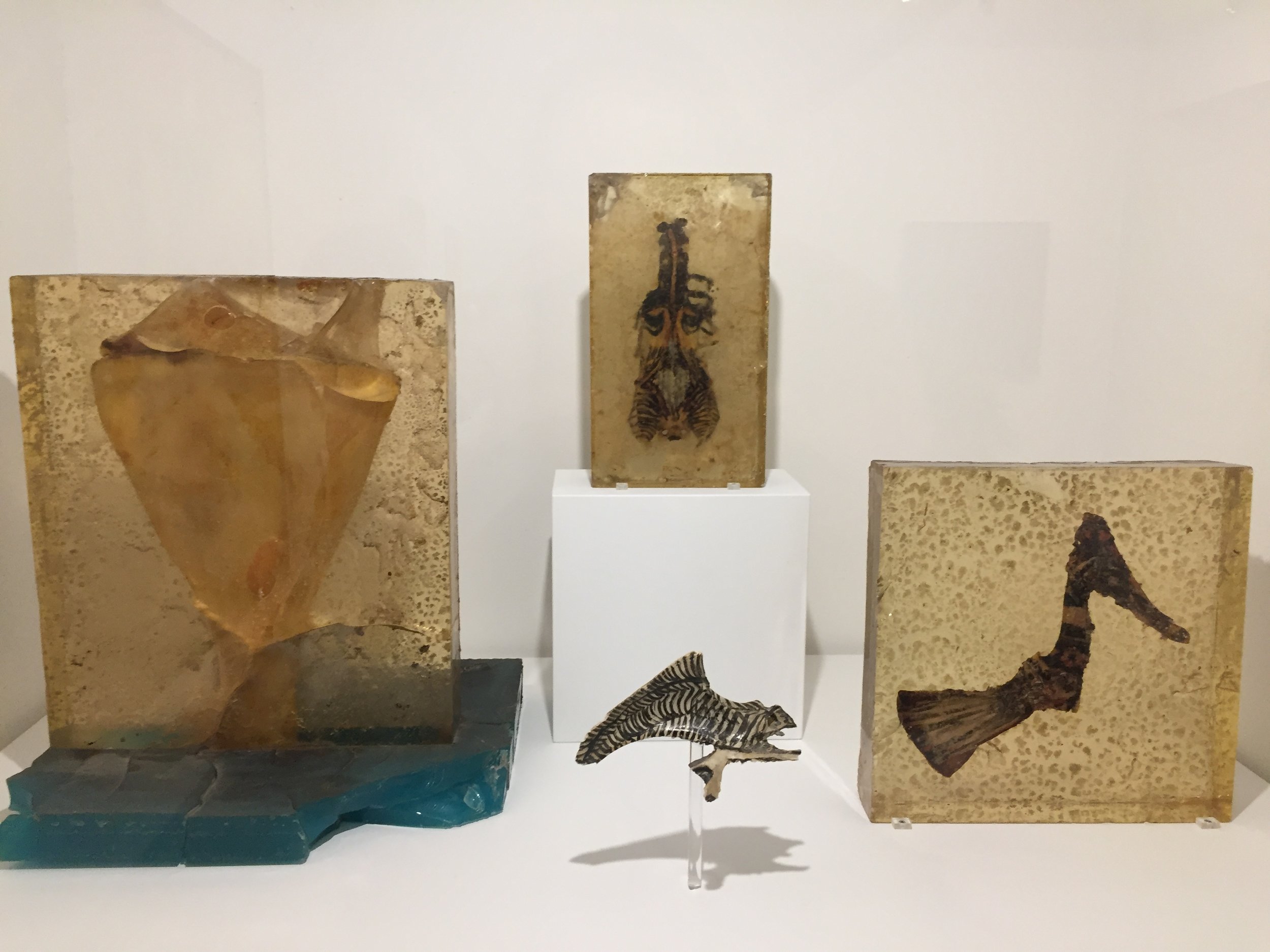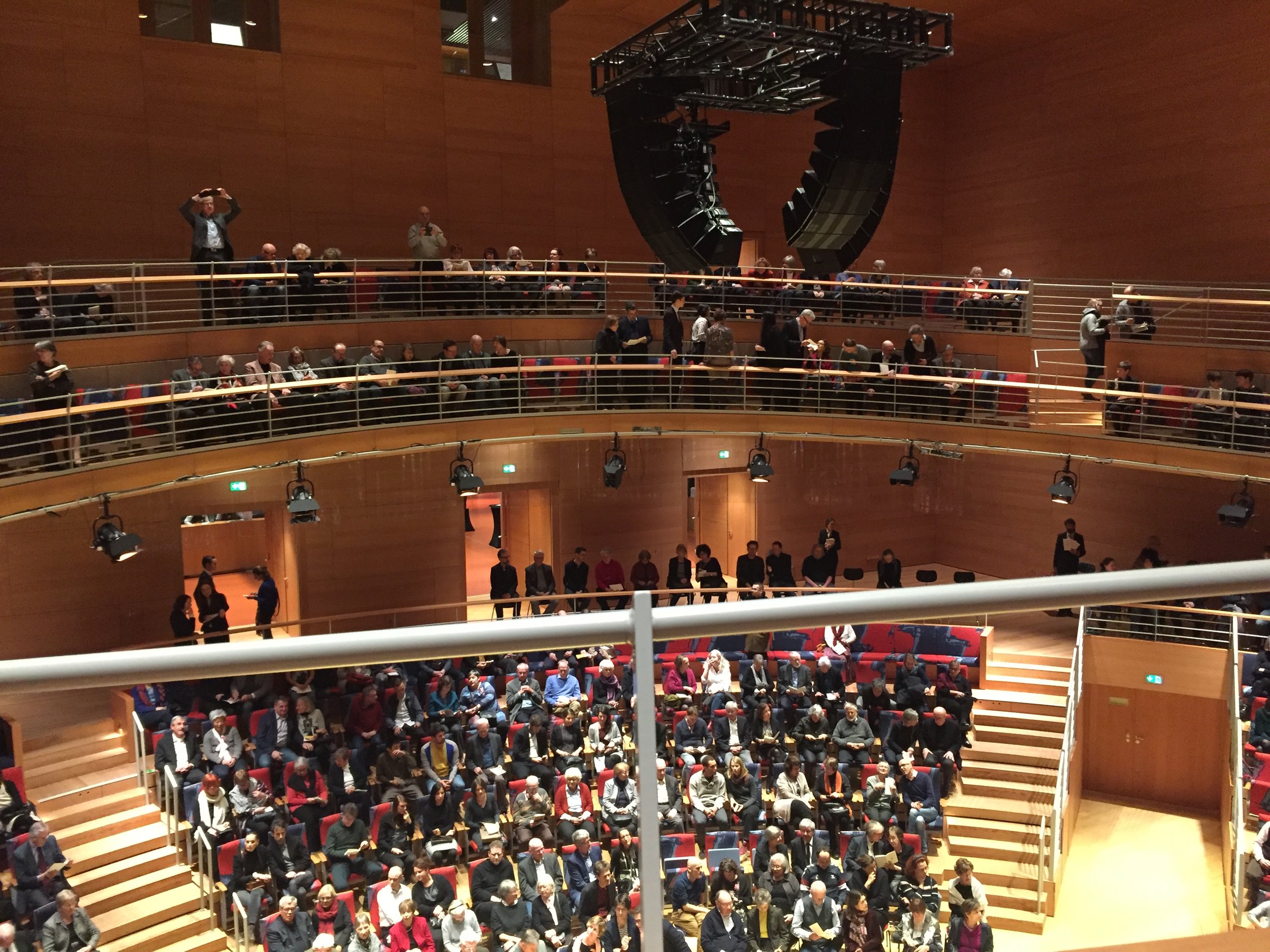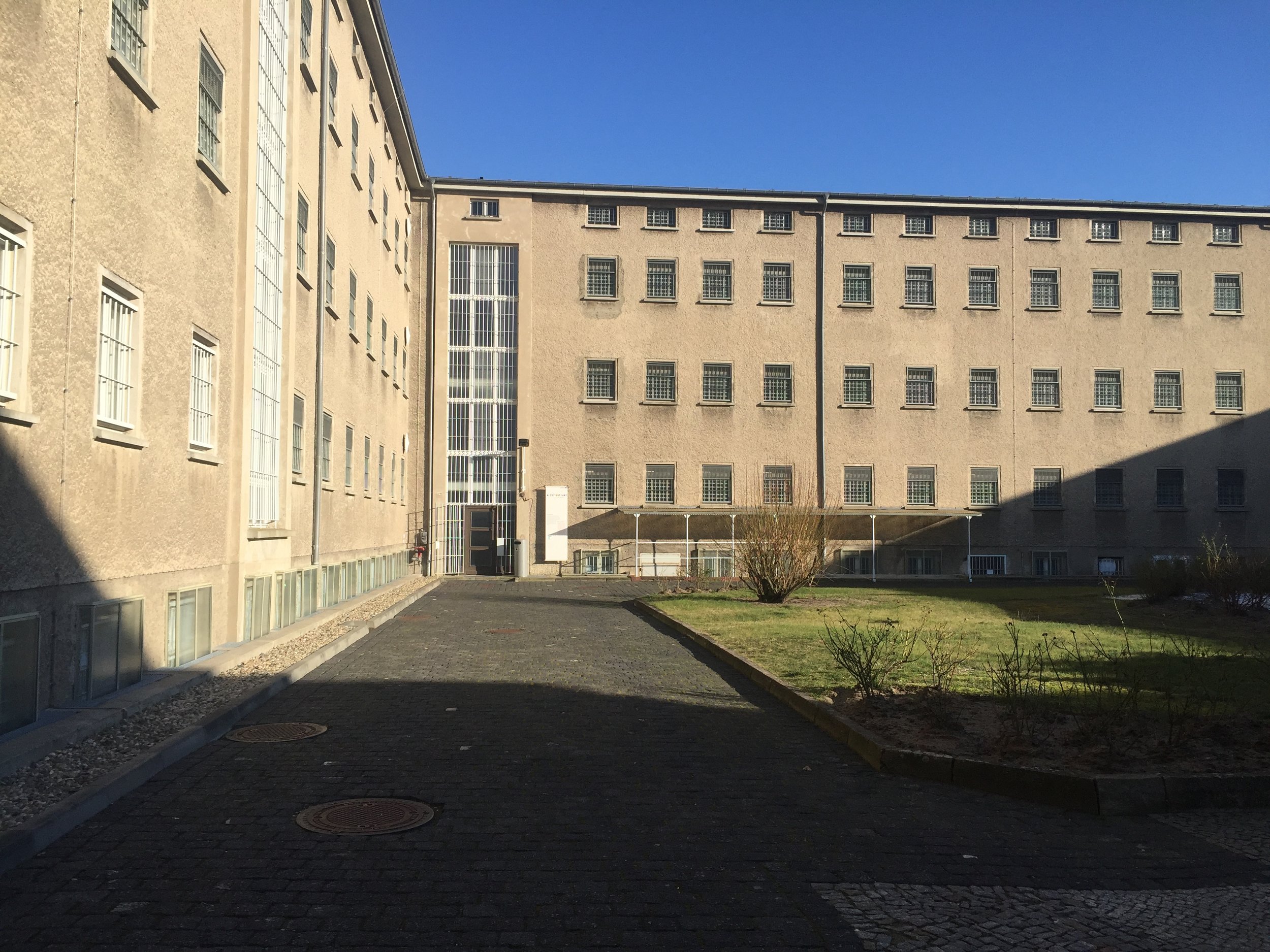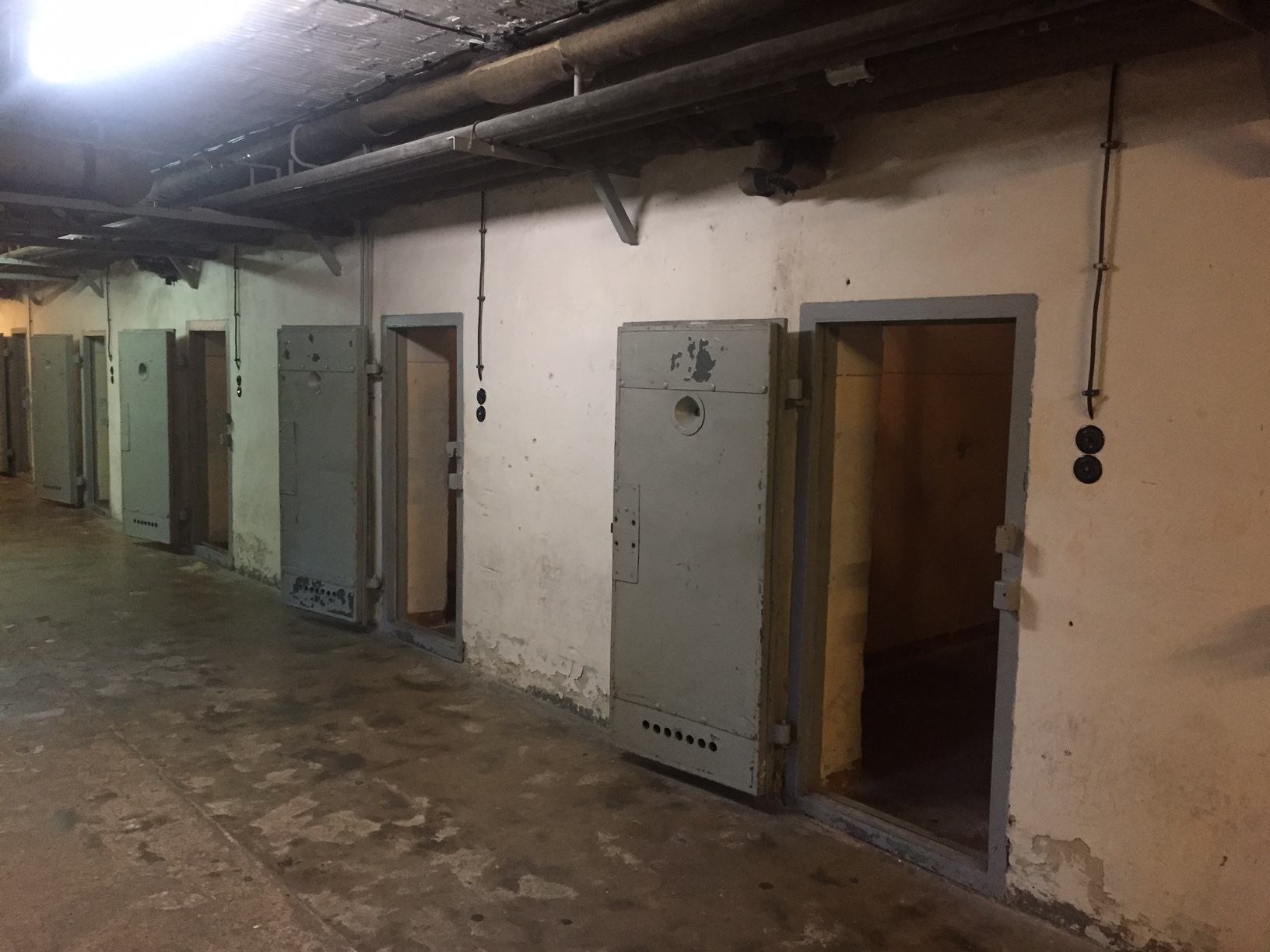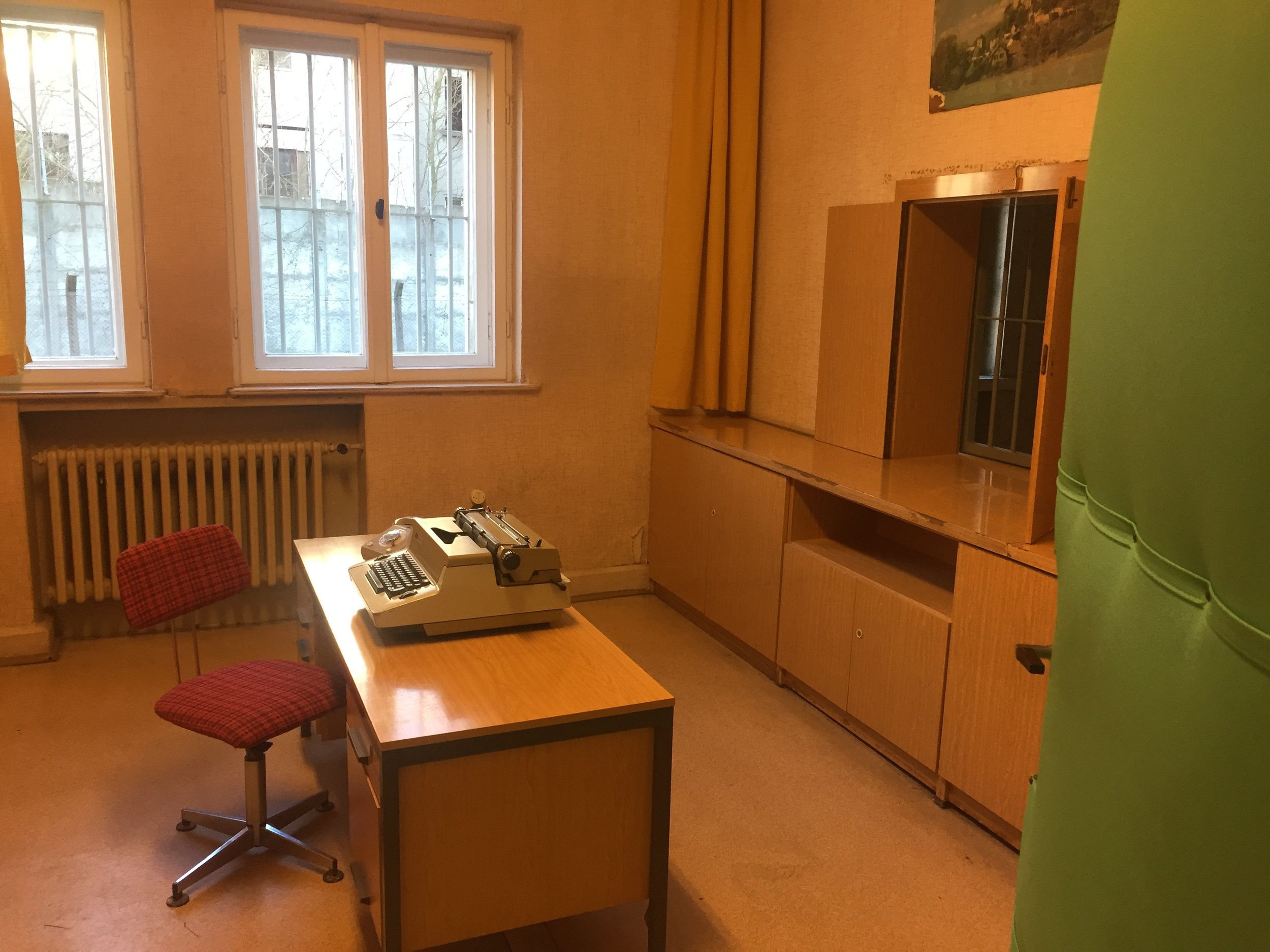In the few spare minutes I had while in Berlin, I did three things that are not to be missed.
First: the KunstHalle DeutscheBank is the second home of a Tate Gallery show on Turkish artist Fahrelnissa Zeid, someone entirely unknown to me. Zeid was born into Ottoman gentry in 1901. Her brother shot her father but this devastation did not prevent Zeid from going on to study first in Turkey and then in Paris and eventually to marry a writer and become a private painter.
Suddenly she divorced and married an Iraqi Prince who was appointed ambassador to Berlin. She took up painting quite seriously and traveled widely, an itinerant painter. Finally after he was transferred to London, she narrowed her focus between London and Paris and became part of the Nouvelle Ecole.
Her influences were eastern and western and her art reflects this intersectionality. After painting, she began some work in golden resin which reminded me of Rachel Whiteread and is so contemporary, capturing chicken bones which she used as talismans of destruction.
Second: I stole away on our one free night to listen to Christian Tetzlaff, his sister Tanja and Lars Vogt at the newish Frank Gehry designed Pierre Boulez Saal, home to the East West Orchestra of Daniel Barenboim. Though not as sumptuous as Disney Hall, and slightly less perfect for viewing (I was in the upper tier, and a bar does obstruct the view somewhat), it is another acoustical marvel and the Tetzlaffs and Vogt showed it off to perfection with a rousing performance of Schumann, Brahms and Dvorak. It's intimate and lively, and it renewed my feelings of jealousy of the youthful and serious audience for music in Berlin. What a delight to feel that music is part of daily life and not an extravagance! I don't know why we can't replicate this in the US. I understand about unions, I understand about costs, but there must be a way that we can inculcate young people with a delight in music that goes beyond pop (nothing against pop, I love it, but let's have both)
Finally, as mentioned, I visited the Stasi Prison on the outskirts of the former East Berlin. Entirely preserved down to the padded cells, the interrogation rooms, the windowless corridors, it is The Lives of Others come to life. It's a sobering but necessary reminder of what can happen when citizens are forced to turn against each other.
